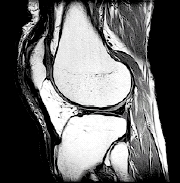Evaluating Kneecap (Patella) Problems
Evaluating Kneecap (Patella) Problems
You can find out what is causing your knee pain by having a thorough evaluation. You may see an orthopedist or a sports medicine healthcare provider. These providers treat bone, muscle, and joint problems. Your healthcare provider will work with you to find the cause of your knee pain and design a treatment plan for you.
Health history
Your health history gives your healthcare provider clues about the cause of your knee pain. It helps your healthcare provider set goals for your treatment. You’ll be asked about your pain and which activities make it worse. Your healthcare provider will also ask about past knee problems and activities you like to do.
Knee exam
A physical exam helps your healthcare provider locate your specific knee problem. Your healthcare provider will look at and move your knee to find signs of swelling or soreness. Then he or she will check to see how well your kneecap tracks. Other tests of knee function may also be done.

Tests
Diagnostic tests may help your healthcare provider learn more about your knee problem.
-
X-rays. This can show the alignment and position of your bones, including your kneecap, and help detect if a fracture is present. A CT scan can show more alignment details and can also help to detect a break (fracture).
-
MRI. This can show bone, cartilage, ligament, or muscle problems.
-
Arthroscopy. This uses a tiny camera to let your healthcare provider see inside your knee joint and possibly repair any damaged tissue. This procedure may be done under general or local anesthesia.
Updated:
January 20, 2020
Sources:
Evaluation of the Active Adult Patient with Knee Pain. Up To Date, Radiologic Evaluation of the Acutely Painful Knee in Adults. Up To Date
Reviewed By:
Bass, Pat F. III, MD, MPH,Joseph, Thomas N., MD